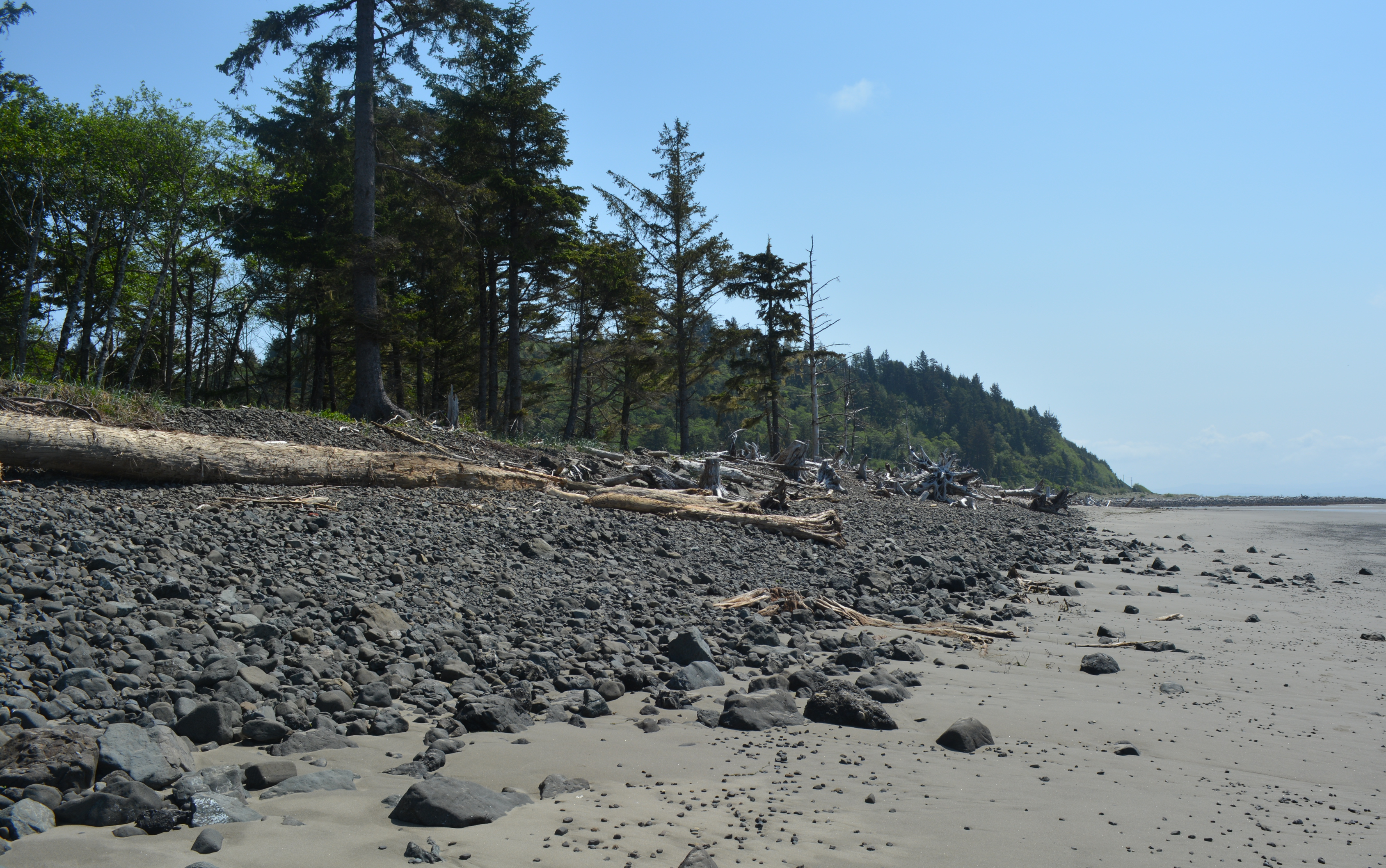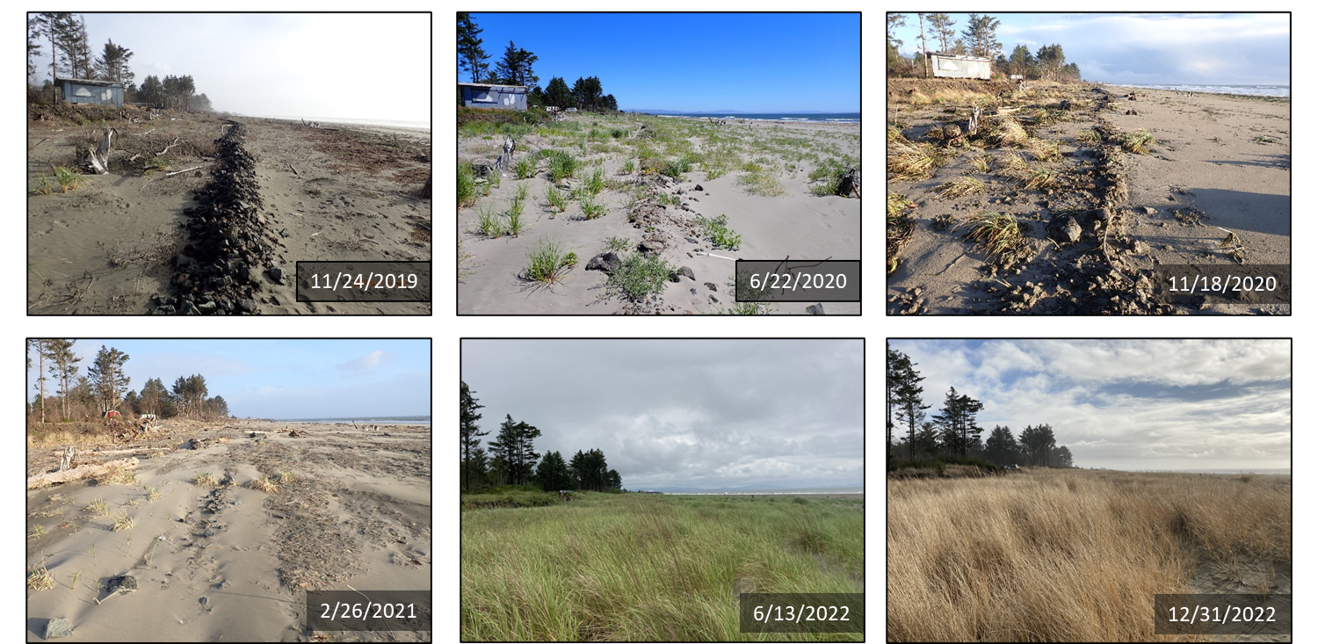
North Cove Beach 2024
The 1.1 mile long North Cove beach is located along the north entrance to Willapa Bay in Pacific County and was once the fastest eroding ocean beach on the U.S. West Coast.
Starting in 2018, we worked arm in arm with the local community to reverse chronic and rapid shoreline erosion eating away the beach. This year, these concerted efforts have been recognized by the American Shore and Beach Preservation Association as one of the nation’s Best Restored Beaches.
Beach at North Cove changing through time..png)
North Cove has come a long way. For decades, the area used to be called “washaway beach” as winter storms, tidal currents and ocean-borne waves ate away bluffs, dunes, and trees as well as homes, garages, and other structures facing the Pacific Ocean. Through the years, advancing erosion took out a lighthouse, a U.S. Coast Guard station, and 640 parcels of property. It wasn’t unusual to see toppled homes and debris scattered on the beach.
Coastal erosion also threatened lands culturally and historically significant to the Shoalwater Bay Indian Tribe as well as State Route 105, a lifeline corridor connecting coastal communities in Pacific and Grays Harbor counties. About 800 acres of local cranberry farms faced being flooded by saltwater.
To finally halt the erosion and restore the beach, we worked with community members, looking at natural, dynamically stable beaches on other parts of the high wave-energy Washington coast.
Mimicking what they saw, the community, led by David Cottrell, strategically placed about 46,500 cubic yards of natural material –cobbles, gravel, and pebbles – to create cobblestone berms along the backshore of the beach, complemented with large, assembled wood structures and planted native vegetation.
Cottrell, who passed away in 2023, was born and raised in the North Cove community. He was a long-time cranberry farmer and commissioner for Pacific County Drainage District No. 1. He was also a mathematician and keen observer of coastal dynamics.
David Cottrell (left) talks to Ecology coastal engineer George Kaminsky.
The cobble berms proved to have a natural stabilizing effect by absorbing and dissipating wave energy while the large woody material and new vegetation retained sand that rebuilt protective dunes. On one 3,000-foot reach, the width of the dune area grew seven-fold in six years – the accumulation of more than 232,000 cubic yards of sand along the beach.
“David was an innovator and problem solver who worked well with everyone,” said Ecology coastal engineer George Kaminsky. “A quiet giant in the North Cove community, he intuitively understood coastal processes better than most coastal engineers.”
Since the natural materials dynamically adjust to waves and water levels, the nature-based approach, if maintained, will also provide long-term coastal resilience to climate change and sea level rise.
“We are so pleased that the beach environment has transitioned from one littered with house debris, concrete foundations, and destroyed infrastructure to a broad healthy recreational beach enjoyed by the public and multiple species of interest,” Kaminsky said. “It was David’s insight and initiative that started the North Cove dynamic revetment, which has effectively halted a century-long trend of shoreline retreat and saved the remaining North Cove community.”
In Cottrell’s honor, Kaminsky said the community and Ecology will continue working on the project to enhance its long-term resilience.
“North Cove serves as a model for grassroots community engagement,” he said. “The results have rejuvenated the community and inspired investments in similar nature-based approaches to enhance coastal resilience across the country and around the world.”

